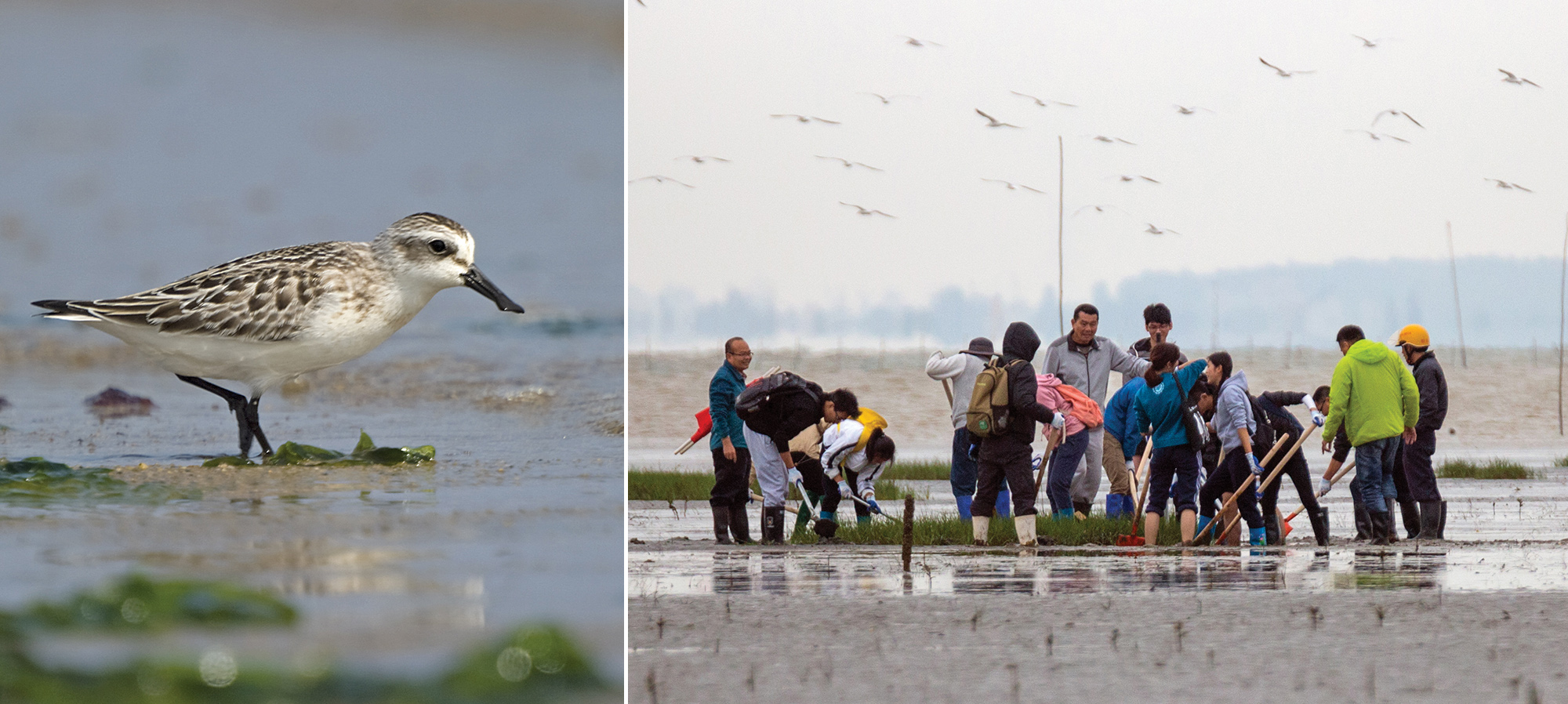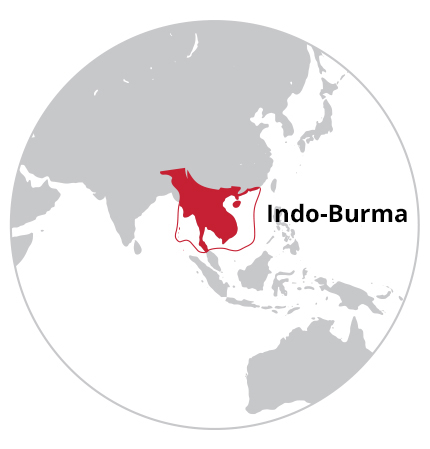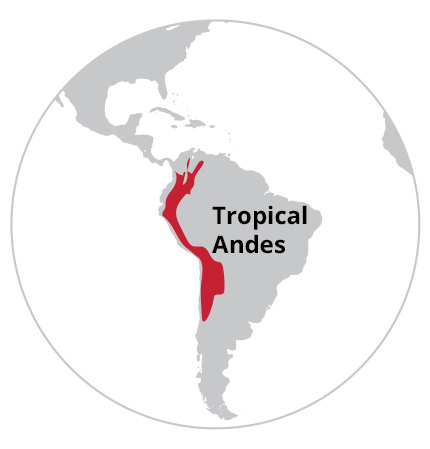Strengthening Local Conservation Leadership
CEPF supports projects that strengthen local and national organizations and communities that are contributing to biodiversity conservation in the hotspots, enabling these groups to take the lead in future conservation efforts.
Indo-Burma Biodiversity Hotspot
The Hong Kong Birdwatching Society is working to bolster networks among civil society organizations—and between those organizations and government agencies—to reduce illegal waterbird hunting at key intertidal wetlands in China’s Guangdong and Guangxi provinces.
The wetlands, which stretch from Hong Kong to the border with Vietnam, are part of an important bird migration route. As birds stop to feed on invertebrates in the mudflats, thousands every year are killed as a result of illegal mist net hunting. Waterbird populations have been collapsing, with many once-common birds added to the IUCN Red List of Threatened Species.
With help from a CEPF grant, the Hong Kong Birdwatching Society has worked to engage public groups, training them to monitor bird populations and use satellite images to locate mist nets. Armed with this proof of the nets’ locations, they hoped the authorities could no longer turn a blind eye to the illegal killing of birds.
The society’s efforts paid off, with monitors helping to confiscate and eliminate nearly 200 illegal mist nets, as much as 90 percent of the total in the region just five years ago.
Vivian Fu, the project manager, said that, in addition to training volunteers to monitor hunting activity, the organization built relationships with the local forestry department, which is responsible for law enforcement within the Zhanjiang and Leizhou coastal wetland areas.
“Most of our work was building capacity within the local community,” Fu said. “Now that we have a volunteer team, even though the project has ended, they are continuing to monitor and patrol—as well as recruit and build capacity—on their own.”
The project also is proving to be scalable, with volunteers from other regional NGOs traveling to attend workshops and training.
What’s more, Leizhou now attracts more threatened species, such as the Critically Endangered spoon-billed sandpiper (Calidris pygmaea); this is a strong indicator that the environment is becoming more habitable for these vulnerable birds.
Tropical Andes Biodiversity Hotspot

In the Pialapí Pueblo Viejo Indigenous Reserve in southwestern Colombia, the ancestral homeland of the InkalAwa (“People of the Mountain,” also known as the Awa people), La Planada Nature Reserve was established in 1982. Control of the 3,200-hectare reserve, which is home to species such as the tanager finch (Oreothraupis arremonops), the cloudforest pygmy-owl (Glaucidium nubicola) and the spectacled bear (Tremarctos ornatus), was given to the town council of Pialapí Pueblo Viejo in 2010.
With funding from CEPF, local indigenous organization Resguardo Pialapí Pueblo Viejo is developing a management plan for the reserve, seizing the opportunity to not only better connect the reserve to the local indigenous community and its needs, but also to build and display the organization’s capacity to employ sound financial and organizational practices.
Strengthening the organization and the reserve can provide a boost to communities that struggle with poverty, are recovering from years of armed conflict and must deal with the influence of coca production for the illegal drug trade.
According to Miguel Caicedo, director of Reserva Natural La Planada, Resguardo Pialapí Pueblo Viejo, the Awa people are embracing this chance to define the road ahead in hopes of generating additional funding to maintain the reserve in ways that protect the ecosystems and benefit local people. CEPF-funded training has strengthened the organization’s administrative capacity and enhanced budgetary and accounting processes, helping the organization demonstrate its financial capacity to other potential donors. The reserve has already secured funding from the GEF Small Grants Program.
“The indigenous people had no experience in the management of a natural reserve,” Caicedo said. “This project has shown them how to administer and create a plan for the reserve, so they can develop other projects and acquire the funding they need for implementation.”
Perhaps the most important outcome for the project, though, is the way it has affected how the Awa view the land.
“For most of their lives, the indigenous people have seen the reserve as something not part of their own lives or territory. Being involved in the development of this plan has been an important step toward empowering them to manage the reserve.”
“For most of their lives, the indigenous people have seen the reserve as something not part of their own lives or territory,” Caicedo added. “Being involved in the development of this plan has been an important step toward empowering them to manage the reserve.”
Activities through late 2017 include hosting workshops in the communities of Pialapí and Curcuel (including the Casa Grande and Dos Quebradas communities) to train participants in the key elements of management plan development.
The project has also helped Resguardo Pialapí Pueblo Viejo to establish relationships with other NGOs that are influencing and advising indigenous reserves in the area on the management of protected areas in their respective territories.
Photo Credits
Spoon-billed sandpiper. © Ken/Flickr Creative Commons
Hong Kong Bird Watching Society volunteers help eradicate an invasive cordgrass and remove rubbish on the mudflat in Leizhou, Guangdong, China. © Ye Zhi-ying
Members of the Curcuel community, Colombia. © Guillermo Cantillo Figueroa






